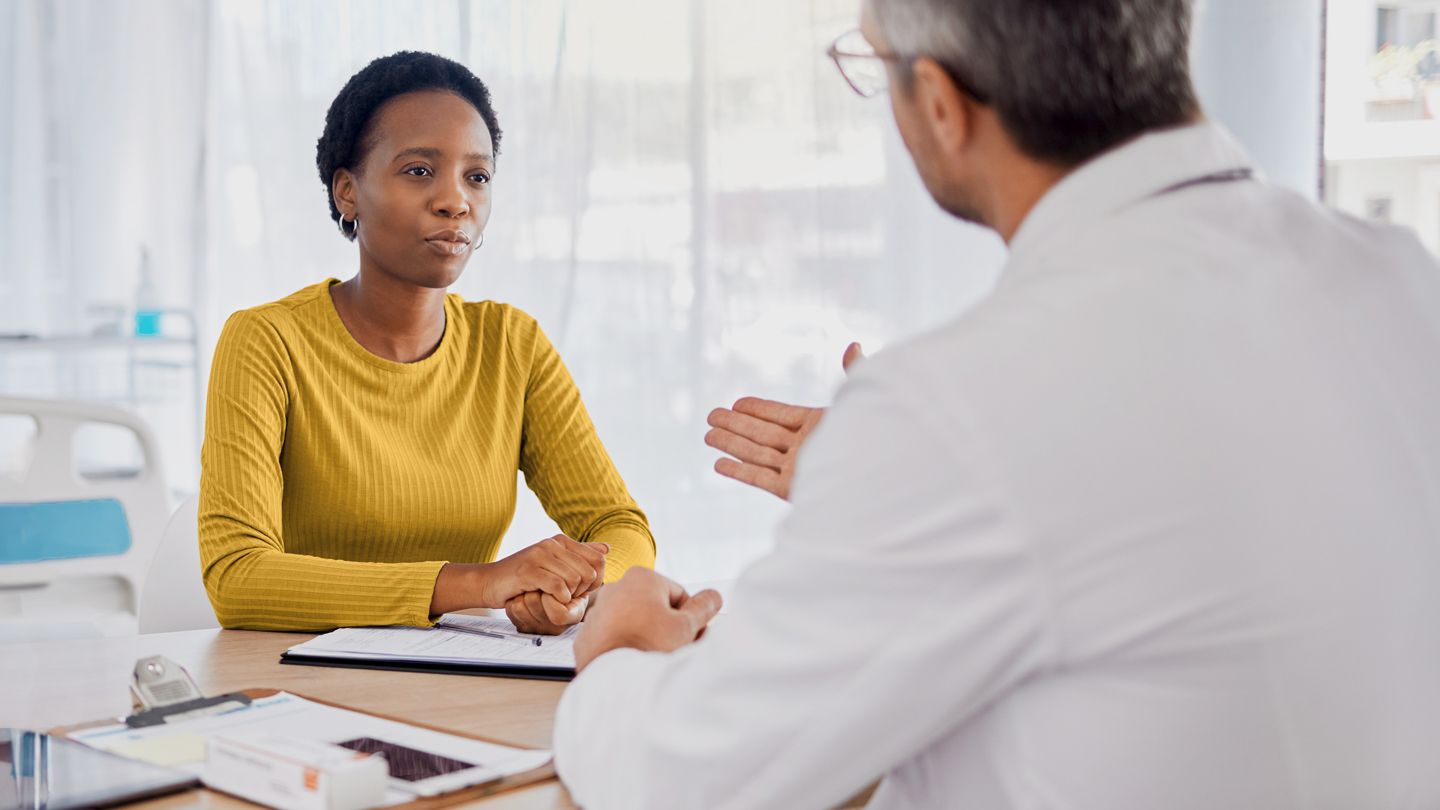Clinical trials are widely accepted as the way to progress toward establishing new standards in cancer therapies while simultaneously offering affordable, state-of-the-art care. But few people participate in them. In fact, only 3 to 5 percent of eligible adults with cancer participate in clinical trials.e60dc2a1-f33c-4a05-9b50-8e3e8e597629628f880a-d1ab-442b-a3f3-c17c040f9577 “Most patients will never participate in trials, even though most would say yes if asked,” says Mark Fleury, PhD , policy principal on emerging science for the American Cancer Society Cancer Action Network (ACS CAN) and leader of their clinical trials portfolio. The reasons are many, but here are some of the common barriers to signing up for a trial and what you can do about them.
Barrier #1: The Awareness Gap The Awareness Gap “People with cancer aren’t generally aware that clinical trials exist, that they may be eligible to participate, that various support services can assist them in participating, and that it’s within their power to ask,” says Andrew Poklepovic, MD , an associate director of clinical research at the Virginia Commonwealth University Massey Comprehensive Cancer Center in Richmond. Doctors, for their part, may not be aware of their patients’ interest in clinical trials, Dr. Fleury says, or what trials are out there. “Because the information isn’t easily available, [doctors] may not know about trials at their own institutions,” he says. “And they often lack staff, bandwidth, and processes for exploring what’s available off-site.” How to Get Around It Ask about clinical trials . Now that you know the problem, ask your healthcare team — ideally upon diagnosis — about trials available to you at different treatment stages. Another good time to ask is if a prescribed treatment plan fails. Asking can prompt doctors to regard you as a partner in your cancer care and to search for appropriate trials, says Dr. Poklepovic. Ask for a referral . If a doctor or local institution can’t help you navigate the trial landscape, ask for the name of an academic medical center or major practice group within driving distance, where there’s likely to be someone who can help. Check out clinical trial databases and matching services . Government-sponsored, third-party, and disease-specific sources listing cancer trials may also offer skilled navigators to help you match your medical profile with trial-eligibility criteria. Here are some links to get you started: Government-Sponsored Trial Finders ClinicalTrials.gov National Cancer Institute: trials.cancer.gov (limited to NCI–supported research and sites) Third-Party Trial Finders Ancora.ai Carebox: careboxhealth.com Leal Health: leal.health Massive Bio: massivebio.com Disease-Specific Trial Finders Blood cancers/Leukemia & Lymphoma Society: https://www.lls.org/treatment/types-treatment/clinical-trials Breast cancer: BreastCancerTrials.org Colorectal cancer/Fight Colorectal Cancer: fightcolorectalcancer.org/clinical-trial-finder/ Gynecologic cancers (breast/metastatic breast, cervical, ovarian, and uterine)/Share Cancer Support: sharecancersupport.org ; or call 877-769-4832 (212-542-5897 in New York City) — Spanish-speaking specialists available (Se habla español) Lung cancer/Lungevity: https://clinicaltrials.lungevity.org/ Neuroendocrine tumors/cancers: Ancora.ai/neuroendocrine Ovarian, fallopian tube, and primary peritoneal cancer/Ovarian Cancer Research Alliance: https://ocra.careboxhealth.com Any reputable advocacy group, support group, or foundation supporting research into the cancer you’re living with may also have links to clinical trials and trial navigators.
Barrier #2: Eligibility Criteria Eligibility Criteria Depending on the trial protocol, any part of your medical profile or treatment history may create an obstacle to joining. But what many people don’t understand is that there are work-arounds, experts say. How to Get Around It Explore bending or waiving criteria . For example, since kidney function can vary weekly, ask to be retested after you drink plenty of water and then submit the new results. If other health conditions (comorbidities), such as diabetes or hypertension , make you ineligible, ask if the requirement can be waived. “If a condition is under control, it may make no difference to the trial’s outcome,” Poklepovic says. Ditto for “performance status” (how independently active and ambulatory you are). Word to the wise: Poklepovic says to stay as active as possible for as long as possible, which will make you more likely to qualify for trials. And if you do get turned down based on eligibility criteria, Fleury advises asking about having your eligibility reconsidered if things change moving forward. “Ask if [you might qualify] if your current treatment stops working,” he says.
Barrier #3: Travel Travel Not all trials take place within a convenient driving distance or an easy flight. A trial’s inconvenient location can pose significant hurdles to participation for some. How to Get Around It Discuss technologies and other tools that might reduce time and travel demands . These include giving your consent virtually, submitting health data using remote-monitoring devices and wearables, and seeing doctors via telehealth visits for routine check-ins. “Ask, too, about a local health team to routinely collect blood and other samples,” says Fleury.
Barrier #4: Medical Costs/Insurance Coverage Medical Costs/Insurance Coverage People often reject trial participation because they think it involves costs (for extra services and tests, copays, and deductibles) not covered by the trial or by insurance, according to an ACS CAN report. The reality is that Medicare and Medicaid are required to cover “standard of care” costs (that is, routine cancer treatments), including costs associated with complications experienced during a trial. But private insurance companies, who are mandated by the Affordable Care Act to cover routine care within cancer trials, may insist that those services be in network — a major issue for trials at out-of-network facilities. How to Get Around It Ask what the trial covers . Most trials should cover treatment costs and follow-up visits. Get a breakdown of what they will cover. Confirm what insurance covers . Ask about in-network restrictions. The trial coordinator should know whether routine services can be performed by nontrial, in-network staff. Seek assistance to bridge the coverage gap . Many cancer-specific organizations, such as the Leukemia & Lymphoma Society , link to financial resources. So do many cancer and patient-centric nonprofits, including: American Cancer Society : Search by keyword/ZIP code. CancerCare : They offer financial/copay assistance, the Helping Hand Online Financial Resource Database, and resources for people of color and LGBTQ+ individuals affected by cancer. HealthWell Foundation : You can also search for “disease funds”. Patient Advocate Foundation : Click on the Case Management Assistance, Financial Aid Funds, or Co-Pay Relief Program button. Patient Access Network Foundation : Their ComPANion Access Navigators can help you find financial aid.
Barrier #5: Nonmedical Costs Nonmedical Costs Not all costs are copays. “Travel, parking fees, $4 cups of coffee at hospital cafeterias, overnight housing — ancillary costs add up to a huge participation barrier,” Fleury says. “People have stopped cancer treatments because of nonmedical expenses.” Some clinical trials will reimburse these costs. Others won’t, citing anti-kickback regulations aimed at preventing payoffs for trial participation. (There are ongoing legislative efforts to clarify that ancillary cost reimbursement isn’t a kickback.) How to Get Around It Compile a comprehensive list of nonmedical expenses. Consider all costs associated with participation. Travel, lodging, meals, parking, and child or elder care are some possibilities.e60dc2a1-f33c-4a05-9b50-8e3e8e5976291e459540-3a8a-4e45-b382-bbe8a1a5b6cf Ask trial coordinators about covering these expenses. It never hurts to ask if there is money budgeted for these costs. If the cost is a barrier for you, that feedback will be helpful for the people in charge of the trial. Seek financial assistance from organizations. These include the ACS Road To Recovery (free rides to appointments); Lazarex Cancer Foundation IMPACT Program (direct reimbursement of ancillary costs); American Cancer Society Hope Lodge (free temporary housing during treatment); Patient Advocate Foundation ; and Patient Access Network Foundation .
Barrier #6: Unsure How to Connect to Clinical Trial Teams Connection to Clinical Trial Teams “We hear a lot about people spending hours trying to find the right person to talk to about joining a clinical trial,” Fleury says. The frustration, he says, “stops people cold.” How to Get Around It Recruit an experienced ally. Many medical institutions and cancer centers have patient advocates or clinical trial navigators. Cancer-specific organizations (for example, the Leukemia & Lymphoma Society’s Clinical Trial Support Center ) often have staff experienced in contacting trial coordinators and assisting in enrollment.
Barrier #7: Fear Fear Many people say no to trials, according to the ACS CAN, because they fear its riskiness (such as side effects and adverse outcomes) and, particularly, the loss of control over their own therapeutic plan. “People hate ‘randomization’ — being randomly assigned to a treatment — as well as the idea of being given a placebo, which doesn’t happen, since everyone receives the standard of care,” says Fleury. In one study uncovering the reasons for low clinical trial participation, the study participants expressed concern about the quality of care they would receive. One feared being a guinea pig and said there was a fear of unequal treatment, especially if you’re a minority.e60dc2a1-f33c-4a05-9b50-8e3e8e597629395bd8a1-a995-4e2c-86cc-aec1b679783e How to Get Around It Communicate your concerns. Clinical trials can benefit both you and the healthcare provider. It’s important to voice your concerns, so you can be in control of your healthcare choices. Keep asking questions. Even when the trial is under way, keep the lines of communication open to get answers to any concerns you may have. Make sure they explain a trial’s ethical and regulatory guardrails . These guarantee that no treatment will likely be worse than the other.
The Takeaway Clinical trials can offer hope to people with cancer who are willing to try the latest therapies emerging from research, but few take advantage of the opportunity. Both patients and doctors aren’t always aware of the possible trials available, but there are many resources to find out more about them and if they are a good fit. Other barriers for people considering a clinical trial include eligibility and costs. People who are afraid of the risks of a clinical trial can bring questions about the trial to their healthcare provider to assess if the risks are worth the benefits.
Read the full article here
Leave a comment




